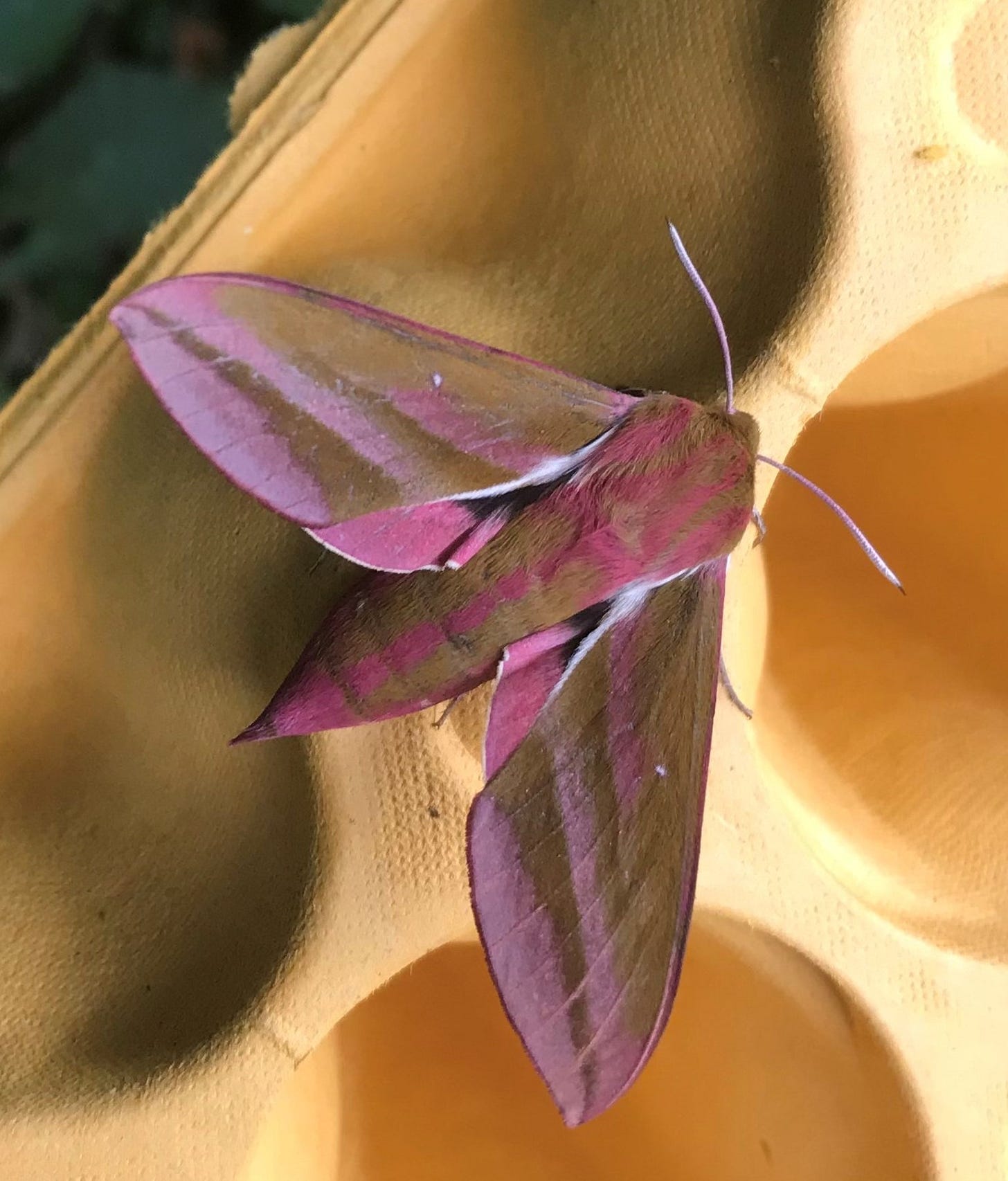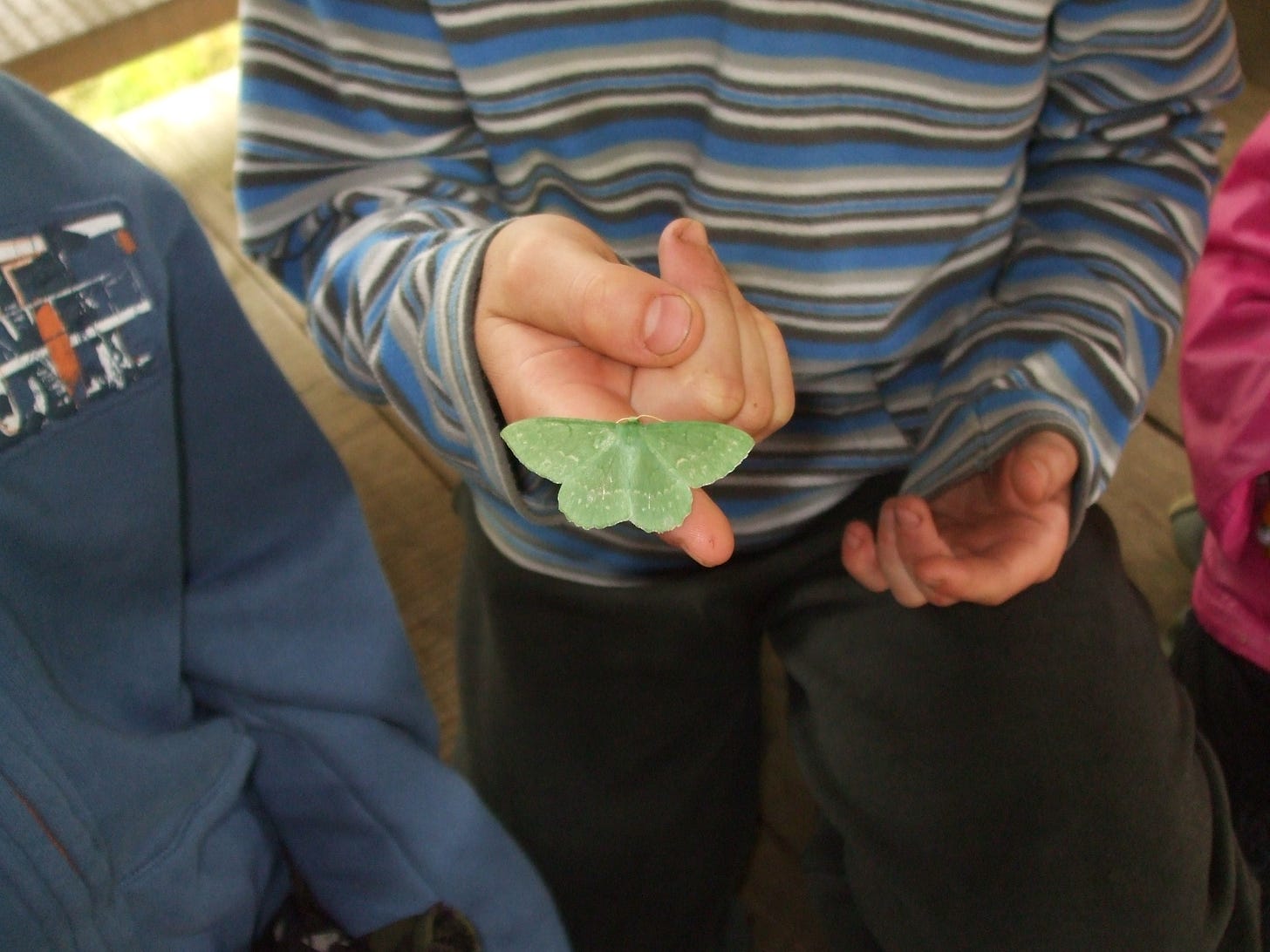Ask most folk what they think about moths and the answers are pretty standard:
“They are brown and drab”
“They only fly at night”
“They eat your clothes”
It doesn’t take long to discover that the answer to all these points is “not always!”
Moths are closely related to butterflies and both belong to the order Lepidoptera. In the UK, we have 2,500 species of moth (compared to only 60 species of butterfly), separated into 900 larger macro moths and the smaller micro moths. Some are fabulously vibrant and almost outshine even the most spectacular butterflies. My favourites include the extraordinary Elephant Hawk moth (left) and the rather glorious Garden Tiger moth (below) – they have the wow factor for sure!
Whilst it is true that most moths fly at night, there are over 100 species of daytime flying moths in the UK. Nice examples of these are the Argent and Sable the Burnet moths and the Emperor moth . Interestingly, it is only the male Emperor moth that flies in the daytime, with the females flying at night……it makes you wonder how they ever meet?
Of our 2,500 species of moth, only two will eat your clothes, and they prefer undisturbed eating places…….so its most likely to be an unworn woolly jumper at the back of the cupboard that gets munched!
Most moth caterpillars prefer a specific type of foodplant, and you can make your garden more “moth friendly” by planting native trees such as oak, willow and birch and allowing some areas to go a bit wild with a mixture of native grasses, dandelions, nettles and foxgloves. Adult moths generally feed on nectar and sap making them important pollinators as they travel from plant to plant. Some adult moths such as the Goat moth and Poplar Hawk moth don’t feed at all – their purpose is to produce the next generation of caterpillars.
Moths play a vital role as a food source - as adult moths for bats and as caterpillars for birds, although some caterpillars can be more than a mouthful like this “Small” Emperor moth!
Moth numbers in the UK have declined by a third in the last 50 years with three species disappearing entirely in the last twenty years. These losses are a result of habitat loss, climate change and pollution. Worrying times.
Unlike butterflies, you don’t need to wait for a sunny day to spot moths. Night flying moths are easily attracted to light and there are a variety of moth traps (mains and battery operated) available to buy if you are keen to develop moth watching as a hobby. These work by emitting light to attract the moths and are usually funnel shaped so that moths slide in but can’t get back out. Egg boxes are placed inside to give the moths somewhere to hide from the light until checked in the morning.
If your budget is limited, and you are good at DIY, there are several “make your own moth trap” guides online using everyday materials.
If your DIY skills are a bit like mine, then you can opt for the simplest moth watching solution – suspend a white sheet in your garden with a bright torch pointing onto it, sit back and wait to see what visits!
Moths are difficult to identify when fully active. A good trick is to store them in specimen jars in the fridge for an hour so. This calms them down enough to look at and photograph them but does no lasting damage to the moth. Once warmed back up, moths can be released back into the garden just as darkness falls to carry on with their important work.
The next time you see a beastie fluttering at the kitchen window late at night, don’t dismiss it as “just a moth” – take a closer look and you never know what you might see.
Eilidh-Ann Phillips : High Life Highland Senior Countryside Ranger (South Highland)






